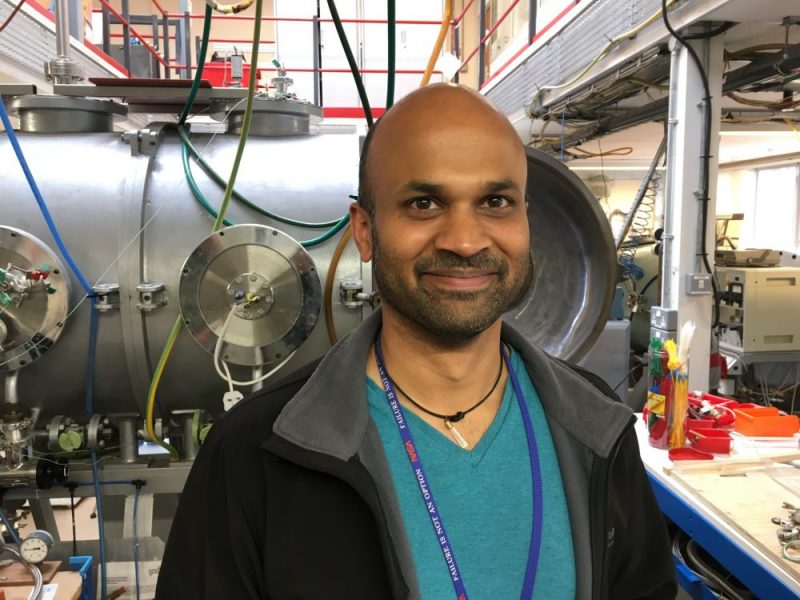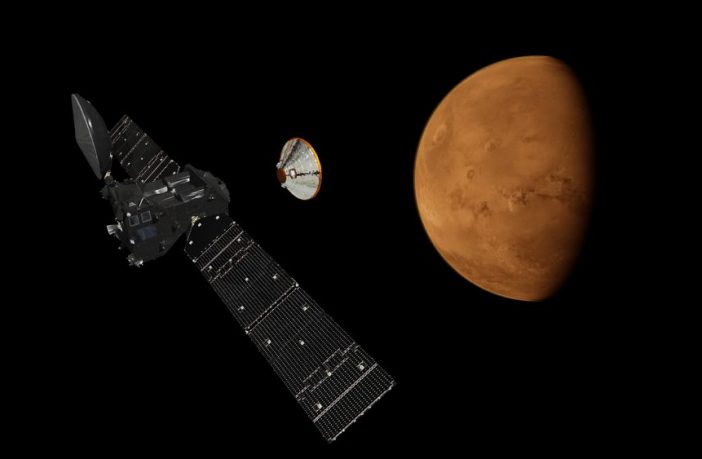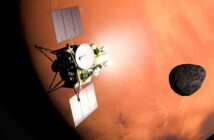The first results from the ExoMars mission – which includes instruments led by The Open University – give new evidence in the debate over whether methane (a key indicator of life) exists on the Red Planet.
The results, feature in two papers published in the journal Nature show a surprise lack of methane and also new evidence of the impact of a month long global dust storm on Mars.
Over the last year the European Space Agency’s (ESA) Trace Gas Orbiter (TGO) followed the onset of the storm and monitored how the increase in dust affected the water vapour in the atmosphere – important for understanding the history of water on Mars.
Latest search draws a blank on methane hunt
The TGO also only found minimal levels of methane gas, further adding to the mystery of why other missions like NASAs Curiosity rover reported high concentrations.

Dr Manish Patel co-leads the NOMAD instrument, which is one of the instruments searching for methane and water in the atmosphere of Mars. As Co-Principal Investigator he is responsible for planning observations and operations, as well as scientific analysis of the data.
Speaking of the results, Dr Patel said:
Our measurements show that the methane detected by previous observations seems to no longer be there, at our detection limit – so in addition to the mystery of where did the methane come from, we now have the new mystery of where on Earth (or rather, on Mars) did it go…
The UK space industry provided the spacecraft’s high-resolution spectrometers (to look at atmospheric composition), batteries, UHF transceiver and aerodynamic analysis. British scientists are also co-leading in analysing the data received from the Martian atmosphere.
Debate still rages over methane
ESA’s Trace Gas Orbiter is studying Martian atmospheric trace gases and their sources in unprecedented detail. It will help to understand the source of the methane in Mars’ atmosphere and whether it is from a geological or biological source and provide Earth connection to the UK built Rosalind Franklin rover in 2021.
Earlier studies – by remote observation, and on the ground by Nasa’s Curiosity rover – appear to contradict this more recent TGO discovery. But Dr Patel explained:
With our current understanding of the Mars atmosphere, the methane that was observed previously should still be observable with the ultra-high sensitivity of NOMAD and ACS on ExoMars. The fact that we can’t see it leads us to think that there could be some other mechanism at work in the atmosphere of Mars, working to remove the methane from the atmosphere faster than we currently think possible.
On what happens now, Dr Patel said:
We keep going. No retreat, no surrender. Our plan was always for this to be a multi-year investigation – these results are only interim, to answer this question properly, we need to observe Mars for at least one Mars year (two Earth years), and preferably a few Mars years to give enough time to ‘see’ the kinds of methane releases that were reported previously. This was always the plan, so we keep calm, and carry on.
The ExoMars spacecraft arrived in orbit 400 km above the Red Planet in April 2018, just a couple of months before the start of the massive dust storm that would eventually lead to the demise of NASA’s Opportunity rover after 15 years roving the Martian surface.
ExoMars is a joint mission between the European Space Agency and Roscosmos. It comprises the Trace Gas Orbiter (TGO) which launched in 2016, and the Rosalind Franklin rover which is currently being built by Airbus in Stevenage ahead of its launch in 2020.
So is there life on Mars?
To the ultimate question about finding life on Mars, Dr Patel said:
The question of life on Mars is a fun one – we can never definitively say ‘no life, anywhere at any time’, we can only report on positive detections. Ultimately, to answer this question unequivocally, we will need to go to Mars with humans – or bring Mars back to Earth.



